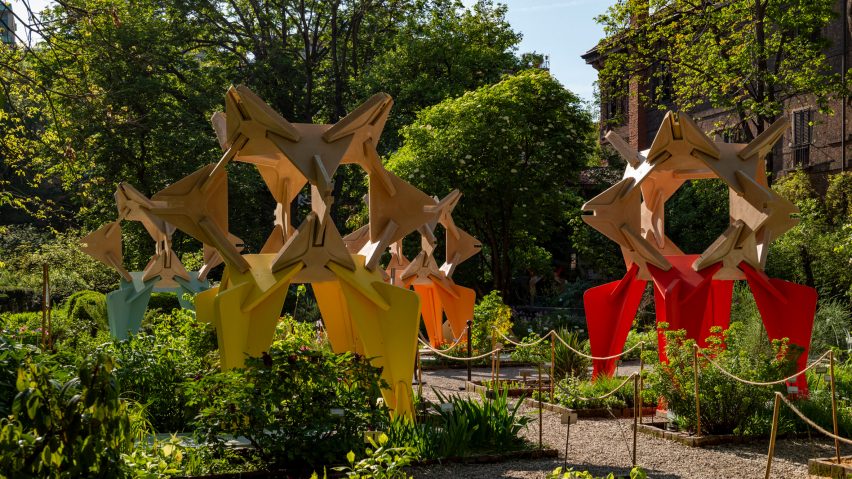
SunRice installation explores new uses for world's "most widely consumed food"
Italian studio Carlo Ratti Associati and architect Italo Rota used a kind of artificial stone made with waste rice husks to create this modular installation in the Brera botanical garden for Milan design week.
The SunRice installation transformed the garden into a pathway that allowed visitors to explore the multiple uses of rice – "from food to experimental construction material".
An experiential journey through the gardens showed how rice transforms from a plant into an ingredient used in cooking before demonstrating how rice waste can become a raw material with architectural applications.
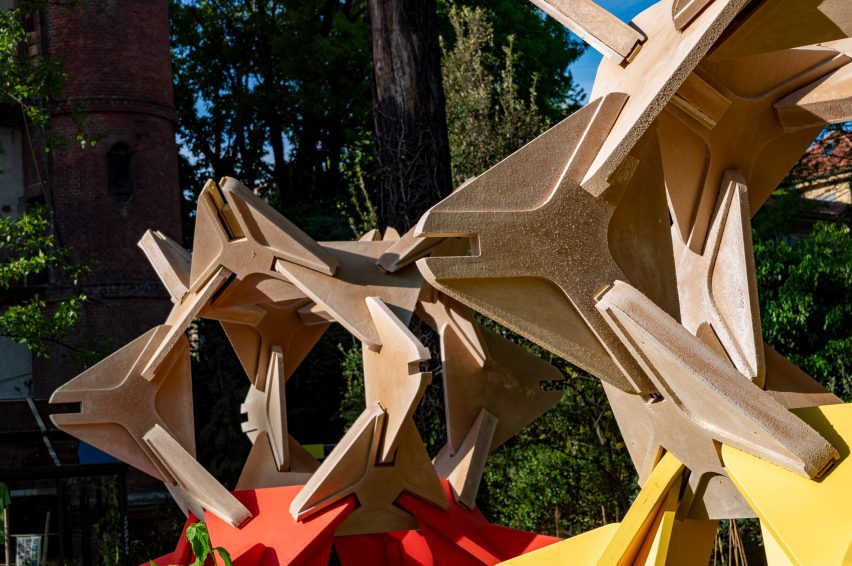
"Rice is the most widely consumed food in the world," said Ratti. "And this is precisely why it has such an extensive and profound cultural significance, opening up so many uses and as-yet unexplored avenues for experimentation."
"As we explore alternative ways to feed the planet's growing population so, too, must we research the ways we can use these materials for sustainable construction."
The material developed by Milanese start-up Ricehouse is a geopolymer – a kind of artificial stone created by chemically reacting silica-rich materials with an alkaline solution, imitating how rocks are formed in nature.
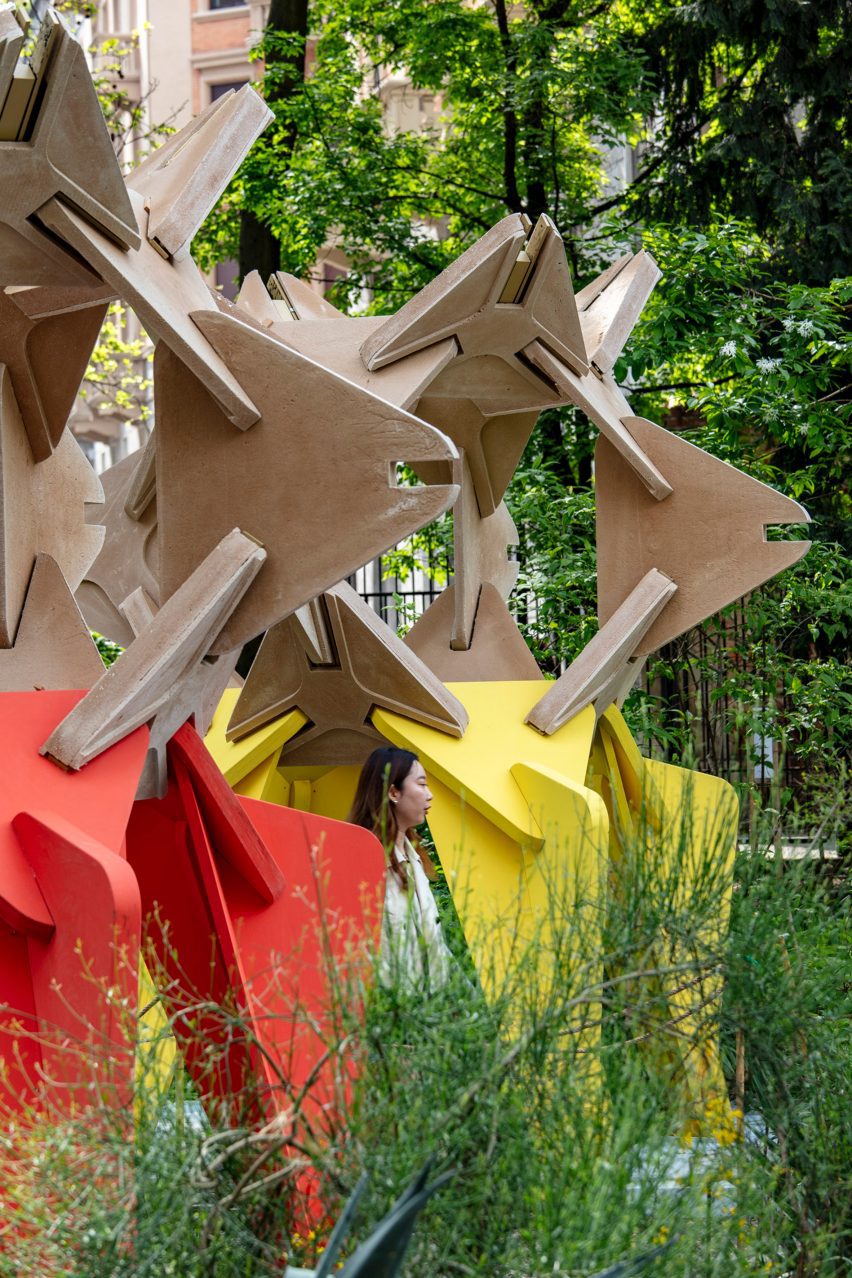
Geopolymers promise to offer a more sustainable alternative to concrete that does not rely on emissions-intensive cement as a binder and instead uses industrial waste streams such as fly ash from coal-fired power plants as silica sources.
The material used in SunRice aims to do one better by integrating an abundant agricultural waste product – the husks removed from rice grains as they are prepared for human consumption.
The resulting polymer can be moulded or 3D-printed to create various shapes, allowing Ratti and Rota to create a system of triangular modules for the installation.
These were designed to evoke the cellular composition of natural materials and the trihedral elements found in the metabolic structures of Hungarian-French architect Yona Friedman.
The installation was developed for global energy company ENI in collaboration with Michelin-starred chef Niko Romito, who helped give visitors a fresh insight into this global staple food.
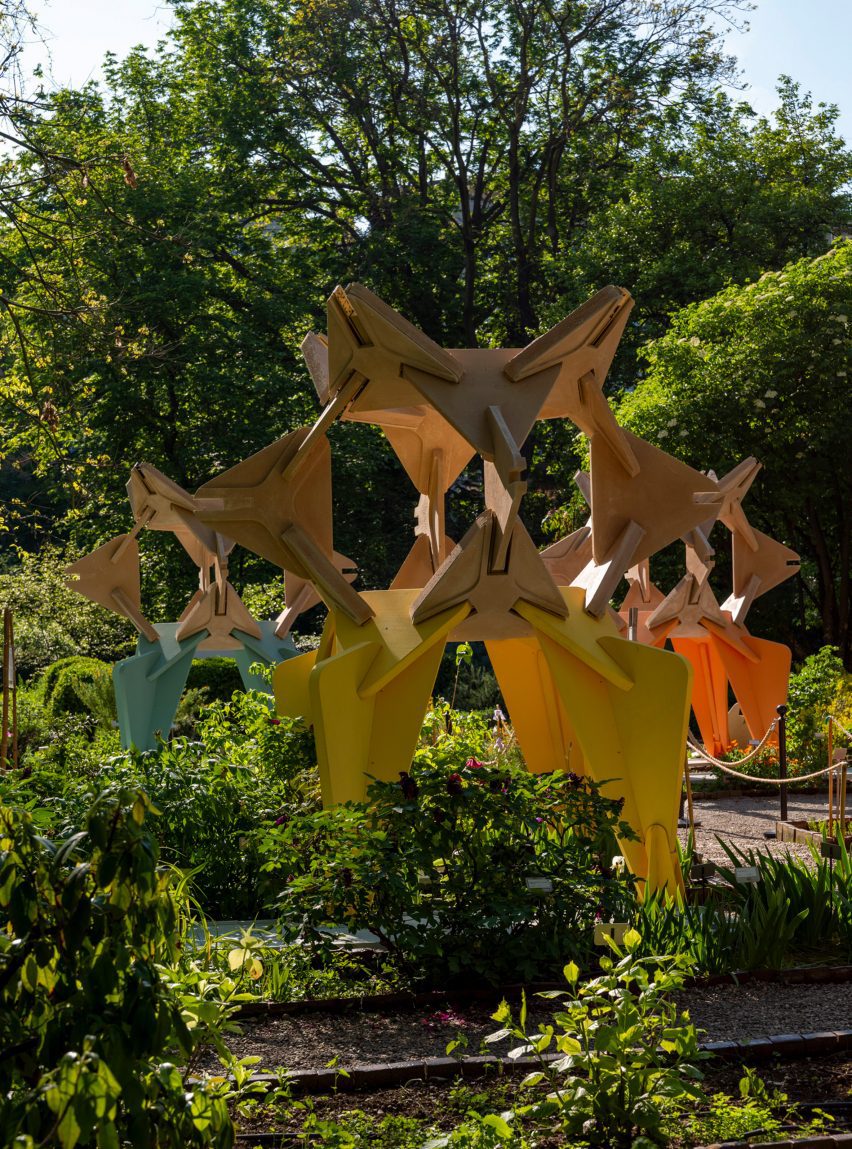
Romito created a rice-based biscuit for the event using herbs grown in the Brera botanical garden as a climax for visitors' sensory journey.
In the wake of Milan design week, the components will now be broken down and used as nourishment for the garden, according to Ratti.
On 6 April, shortly before the installation opened, Rota passed away at the age of 70. The architect was renowned for his innovative museum and exhibition design projects, including working with Gae Aulenti on the renovation of the Museé d'Orsay in Paris.
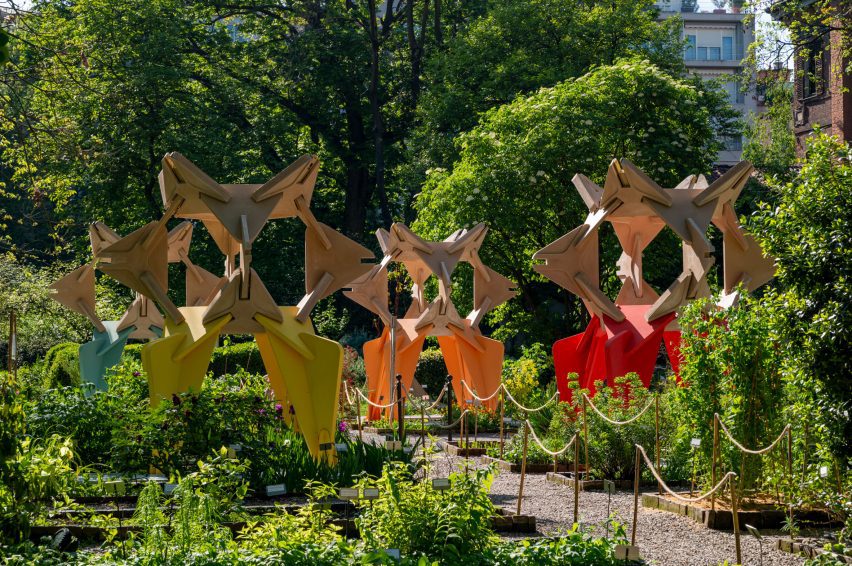
Rota and Ratti collaborated on several projects in recent years, including the Italy Pavilion at the Dubai Expo 2020 and a previous installation at Brera botanical garden featuring energy-generating sculptures.
The pair also worked together on a design for the world's largest solar farm as part of Rome's bid to host the World Expo 2030, as well as a residential project that saw them install a large ficus tree inside a renovated farmhouse.
In an obituary written for Dezeen, Ratti explained how Rota remained in the avant garde of architecture throughout his career, constantly striving to understand and implement new ideas and innovations in his projects and academic work.
Milan design week took place from 15 to 21 April 2024. See Dezeen Events Guide for an up-to-date list of architecture and design events taking place around the world.